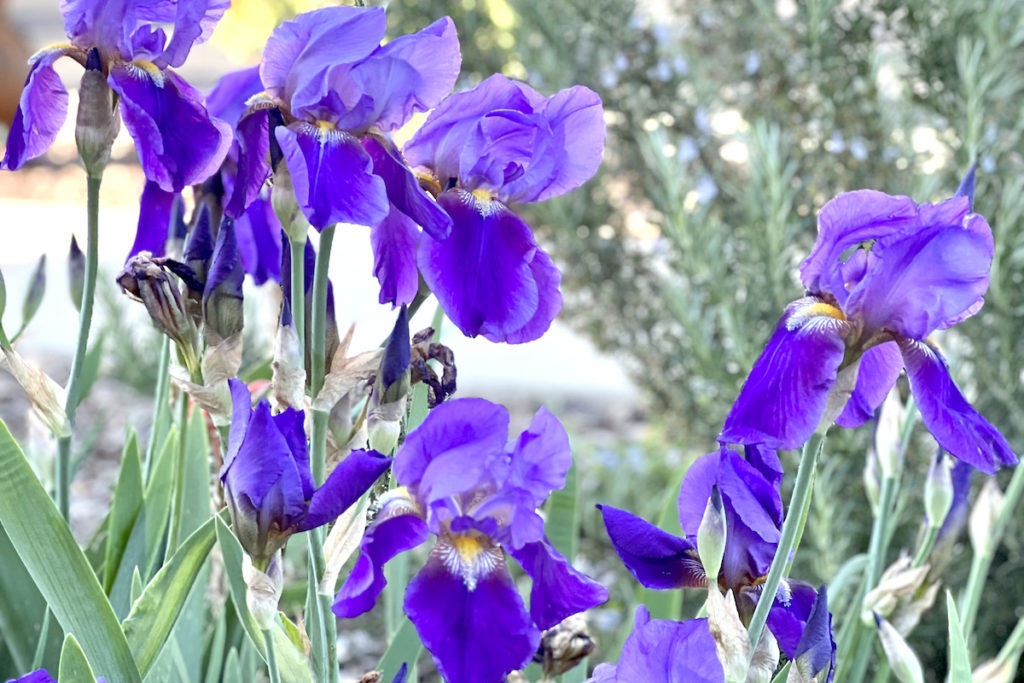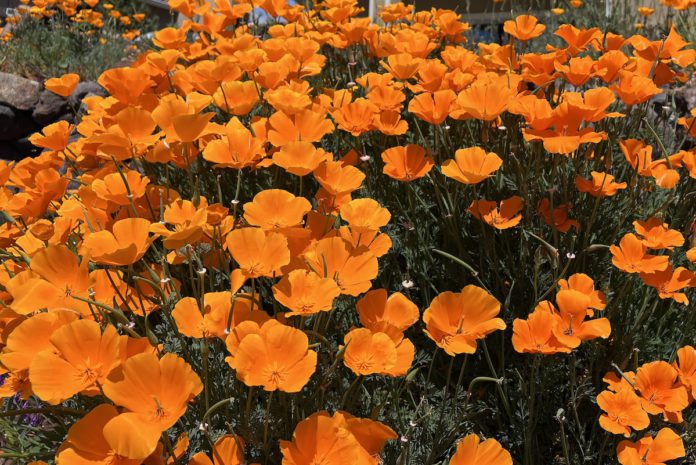Native plants have coevolved with naturally occurring wildlife, fungi and microbes in their area, and their interdependent relationships form the foundation of our native ecosystems. Most native plants have developed natural defenses against disease and insects, reducing the need for pesticides. Since some commonly used pesticides can kill beneficial insects as well, planting natives potentially reduces the use of fertilizers and pesticides and the resulting runoff, which in turn keeps the chemicals out of the waterways.
Clearing of natural undisturbed land for development due to urbanization, agriculture and logging can result in harm to native plant communities. Planting a native garden may help save habitats for bees, birds, butterflies and other beneficial creatures.
The United States Department of Agriculture (USDA) formally defines native plants as “…indigenous terrestrial and aquatic species that have evolved and occur naturally in a particular region, ecosystem, and habitat. Species native to North America are generally recognized as those occurring on the continent prior to European settlement.” (fs.usda.gov/wildflowers/Native_Plant_Materials/whatare.shtml)
When I wanted to convert my front lawn, planting a native garden was the obvious choice. I started with what I could easily find locally and filled up the remaining space with mulch and decor. I plan to add to my garden as I find more plants and as my budget allows. I always start with plants in local nurseries and ask if they can do a special order for something I cannot find.
A great resource to learn more about native plants and their availability is the California Native Plant Society (cnps.org). Choosing plants that match the site conditions for sun and moisture can reduce the need for irrigation once they become established. Converting a lawn turned out to be a rewarding experience for me. Here are some of the plants I chose for flowers in spring and summer and berries in fall.
California Poppy (Eschscholzia californica)
The beautiful golden hue of this state flower of California and the availability and ease of growing motivated me to plant these in my garden. Now in their fourth year, they have never needed tending for replanting, irrigation or fertilizing. The flowers put on a show, naturalize where planted, and come up year after year, bringing glory to any garden and giving a meadow-like look to any space. With the setting sun in the evening, and their bright orange color, they look quite picturesque. They can also aid in soil erosion control on slopes.
As pretty as poppies are, they do not do well as cut flowers. But one can dry them to use in craft projects. They grow really well in poor soils including rocky soil, which addressed my need for plant coverage without having to modify soil texture. As they move towards the end of their lifespan, they develop powdery mildew, especially if there is rain or humidity. They can get out of control in some gardens, as they reseed themselves easily.
Ceanothus (Ceanothus thyrsiflorus)
Also known as California lilac, mountain lilac, wild lilac or buckbrush, this is another plant that is easy to grow and drought tolerant. Ceanothus is a genus of about 50-60 shrubs, and the one I planted is called Yankee Point Carmel Ceanothus (Ceanothus thyrsiflorus var. griseus ‘Yankee Point’). I really like this plant for its bright and glossy foliage and the fact that it produces flowers starting in early spring. It can also be grown as a ground cover.
Two other native plants that have been a great addition to my native garden are coffee berry and snowberry. I chose these because I wanted to plant food sources for birds, especially during the winter months, and for the look of berries in the garden.
Coffeeberry (Frangula californica)
This is a dense evergreen shrub with dark green foliage on reddish stems. The shrub is easy to grow and prune and can be trained to grow as a hedge or a small tree. I chose a small plant, and it grew quickly. I did have to water it regularly the first few summers while it was establishing itself. After that, it needed watering when temperatures reached into triple digits. Its flowers have nectar for pollinators, and berries go through a gradation from red to purple and turn almost black in fall, adding visual charm to the garden.
Snowberry (Symphoricarpos albus)
I love this ornamental shrub for the look of the white berries and the wildlife it brings to my garden. This multi-stemmed plant has oval leaves, pink flowers that look like bells, and white berries in winter on almost leafless branches. The plant adds a gentle vibe to the garden in winter, inviting bees, birds and butterflies to an all-you-can-eat buffet. It does better in shade or under a tree, and likes to be watered during the hot days of summer and early fall.

The Douglas Iris (Iris douglasiana)
Another plant that made it to this list was the Douglas iris. It was easy to find and was a great choice for a part-shade yard. It flowers in early spring, adding color to the garden and food for wildlife. It is commonly found in coastal grasslands, and is regarded as a weed in pastures, as cattle avoid eating it, giving it an edge over other vegetation.
While planting native plants started off as replacing the lawn to conserve water, add variety in color and visual appeal, and reduce maintenance needs, it gave me an opportunity to learn about and experience a whole new body of flora that is rooted in the local ecosystem. Some other native plants that I hope will soon find their home in my garden are Dr. Hurd Manzanita (Arctostaphylos manzanita ‘Dr. Hurd’), Toyon (Heteromeles arbutifolia) and Western Redbud (Cercis occidentalis).
To enjoy some garden tours featuring native plants, please visit bringingbackthenatives.net.
Note: This article gives an overview of growing plants, sun and soil requirements, moisture needs, etc. Plant health and growth will vary based on various factors. This article is intended for gardening inspiration only.




